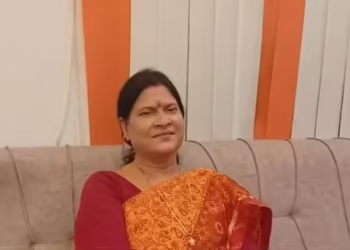In the recent Bihar Assembly elections, Rama Nishad’s landslide victory from the Aurai constituency for the Bharatiya Janata Party (BJP) marked more than a political debut. It signaled a decisive shift within Bihar’s caste-driven political landscape. Her sweeping mandate—set against internal party resistance and a high-stakes battle for the Nishad vote—has thrust her to the forefront of state leadership, placing her firmly in discussions for the post of deputy chief minister.
A Record Mandate Rooted in an Unshakable Nishad Base
Rama Nishad’s win was nothing short of extraordinary. Despite protests from supporters of outgoing BJP MLA Ramsurat Rai during her nomination, she secured not only a victory but a record-breaking margin. The consolidation of the Nishad community behind her was unmistakable.
Her political capital is strongly tied to her family’s legacy. As the daughter-in-law of former Union Minister Captain Jaynarayan Nishad and the wife of former MP Ajay Nishad, she inherits both emotional resonance and organizational strength within the community. Captain Nishad’s decades-long grassroots connection and Ajay Nishad’s influence across Muzaffarpur and Tirhut helped ensure a unified Nishad vote in the BJP’s favor.
This lineage—combined with Rama Nishad’s personal appeal—has positioned her as the consensus leader of a community that influences at least 36 Assembly seats across the state. For the BJP, which has long sought deeper penetration into EBC groups, this consolidation is strategically invaluable.
A Blow to Mukesh Sahani’s ‘Son of Mallah’ Narrative
Rama Nishad’s ascent has delivered a direct challenge to VIP chief Mukesh Sahani, who built his public identity around the title “Son of Mallah” and projected himself as the singular face of the Nishad (Mallah) community.
Aurai was intended to be a proving ground for Sahani’s dominance. The Mahagathbandhan fielded Bhogendra Sahni—a candidate from within the community—to reinforce his claim over the Nishad vote bank. But the electorate delivered a resounding rebuttal. Voters overwhelmingly backed Rama Nishad, sidelining the narrative of media-driven popularity in favor of long-standing grassroots credibility.
The outcome underscored a political reality: while Sahani’s influence remained limited, particularly outside a few pockets, the Nishad community continues to gravitate toward leaders backed by historical engagement and organizational depth. Against the entrenched support enjoyed by the Nishad family in Muzaffarpur–Tirhut, Sahani’s appeal faded.
A Strong Claim to the Deputy Chief Minister’s Office
Rama Nishad’s victory offers the BJP more than a legislative seat—it provides a powerful opportunity to recalibrate Bihar’s caste equations.
Her claim to the deputy chief minister’s post rests on three clear pillars:
1. Community Representation at Scale:
The Nishad community, a significant segment of the Extremely Backward Classes (EBC), holds decisive influence in dozens of seats. Elevating Rama Nishad would secure this vote bank for future elections, including the 2029 Lok Sabha contest.
2. Demonstrated Electoral Strength:
By defeating a candidate backed by Mukesh Sahani and the Mahagathbandhan, she showcased her family’s undisputed hold over Nishad votes—a political asset the BJP cannot overlook.
3. Strategic Fit in Coalition Politics:
In Bihar’s delicate caste-alignment matrix, a prominent EBC representative in a top leadership position bolsters the BJP’s broader social coalition.
The New Face of Nishad Leadership
Rama Nishad is no longer just an MLA. She has emerged as the uncontested political symbol of the Nishad community—someone who has simultaneously secured her own mandate and dismantled an alternative narrative cultivated by her rival.
Her rise places the BJP at a strategic advantage and makes her candidacy for deputy chief minister not just plausible but politically compelling. Ignoring her growing stature, analysts say, could prove costly for the party in a state where caste identity and community leadership remain vital electoral currencies.
If her debut is any indication, the political story of Bihar’s Nishad community has entered a new chapter—one written with a legacy of grassroots connection, a decisive mandate, and a leader ready for the state’s highest echelons.
















